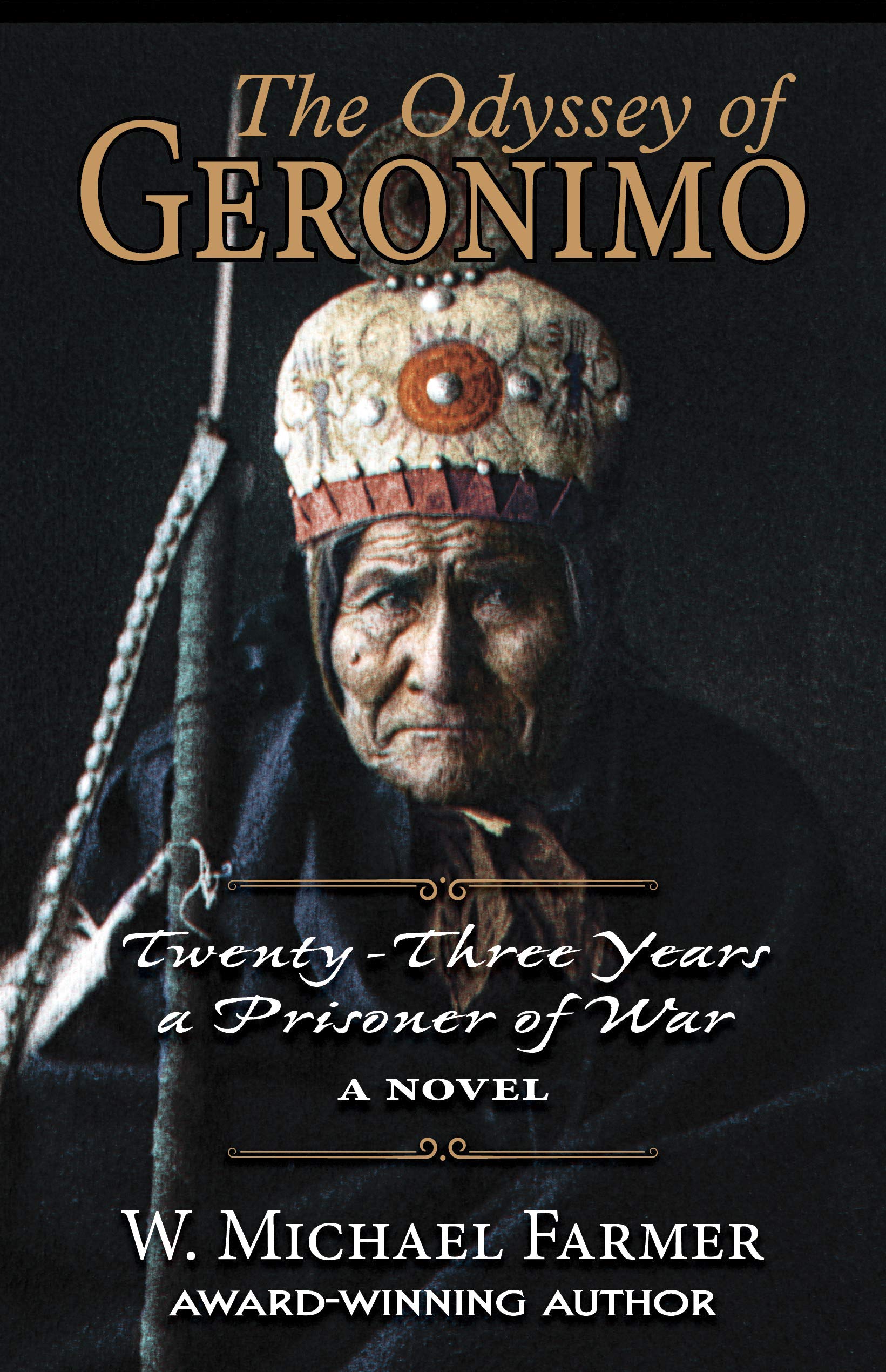Twenty-Three Years a Prisoner of War

By W. Michael Farmer
Published by Five Star Publishing
Release Date November 18, 2020
“The Odyssey of Geronimo is a wonderfully written book. The prose flows easily so that the reader will find himself flipping effortlessly through the pages. The first-person point of view and the use of authentic vernacular has the effect of letting the reader identify immediately with Geronimo.”
After many years of research and writing about the Apache people and their culture, it’s safe to say that W. Michael Farmer is an expert on the subject. Without a doubt, he is an expert at crafting a great story and putting it into words, as his multiple writing awards would indicate. Farmer has won numerous awards, including several Will Rogers silver and gold medallions, Western Writers of America Spur Award Finalist, New Mexico Book Award Finalist, and a whole shelf full of New Mexico/Arizona Book Awards and Finalist Awards. There are so many awards, in fact, that I’m sure I’ve forgotten to mention some of them.
The Odyssey of Geronimo: Twenty-Three Years a Prisoner of War, is a novel based on the actual events surrounding the surrender and subsequent imprisonment of Geronimo and his people – the Chiricahua Apaches. Like the Odyssey of Odysseus in his long and perilous journey to return to his home after the Trojan War, Farmer’s book describes the odyssey of Geronimo in his desire to return to the land of his birth.
From his surrender on September 4, 1886, in New Mexico, to his death on February 17, 1909, in Fort Sill, Oklahoma, Geronimo, and his Chiricahua people were moved from one prison camp to the next – from Florida to Oklahoma under the ever-watchful eye of their white-eye army captors. Many of his family and friends died during their incarceration (the death rate for the captives was almost three times the national average); most from tuberculosis caused in large part by the damp and heavy environment that the Chiricahua people were not used to.
Not everything about Geronimo’s imprisonment was unpleasant. At their last camp in Fort Sill, the Apaches were allowed to raise cattle and tend gardens. They lived in their own homes with their wives and children. Geronimo even became a national celebrity and was allowed to travel to events such as the World’s Fair in Saint Louis in 1904. He even made a trip to Washington D.C. in March of 1905 to participate in a grand parade for President Theodore Roosevelt’s second inauguration. At the time of Geronimo’s death in 1909, he had amassed a small fortune through the sale of his autograph, pictures, and bows and arrows that he sold at the events that he participated in.
This book is written in first-person, in authentic vernacular, as seen through the eyes of Geronimo, giving it a real authenticity that Farmer has learned to master through his extensive research and familiarity with the culture and the land of the Apaches.
It would have been easy for Farmer to do what so many other writers have done when re-counting the lies and mistreatment suffered by our indigenous people – that is to adopt a myopic view of history that sees only the victimization of the Apaches. But Farmer presents their story warts and all, not neglecting to relate some of the atrocities that Geronimo himself was guilty of, such as the incident at Ash Flat where Geronimo and some other Apache braves killed men, women, and children. One small child was impaled on a cactus and another was roasted over a fire. Geronimo had a burning hatred for Mexicans and would not pass up an opportunity to kill one. But he could also be gentle to his children and kind and generous to his people, whom he always put first.
It’s easy for us, from our perspective in time, to look back at history; to pick a side, and offer our two cents about morality or motives. The hardest thing about history is understanding it from the perspective of those who participated; who struggled with the day to day reality of their times. I think that Farmer does an admirable job of viewing past events through the objective eyes of a historian and researcher, while still writing with passion and empathy.
After reading The Odyssey of Geronimo, I don’t know that I would count myself as a fan of the Apache Di-yen (medicine man), but I certainly think that I understand him better, and I even have something akin to admiration for his love of his people, his desire during his captivity to do the right thing and become a better man, and even respect for never giving up on his dream of returning to his homeland; a dream which he never realized.
The Odyssey of Geronimo is a wonderfully written book. The prose flows easily so that the reader will find himself flipping effortlessly through the pages. The first-person point of view and the use of authentic vernacular has the effect of letting the reader identify immediately with Geronimo. I would suggest that W. Michael Farmer makes room on his trophy case for even more awards.

W. Michael Farmer lives in Smithfield, VA, and has a Ph.D. in Physics. His scientific research has included measurement of atmospheric aerosols with laser-based instruments, and he has published a two-volume reference book on atmospheric effects on remote sensing. He combines ten-plus years of research into nineteenth-century Apache history and culture with Southwest-living experience to fill his stories with a genuine sense of time and place. He has also written short stories for anthologies and award-winning essays.






